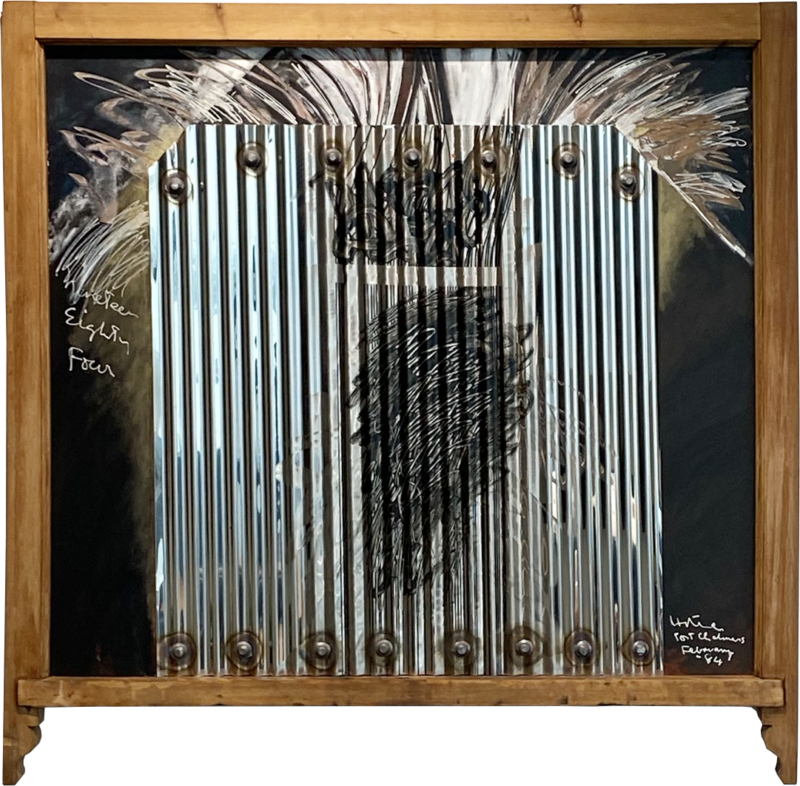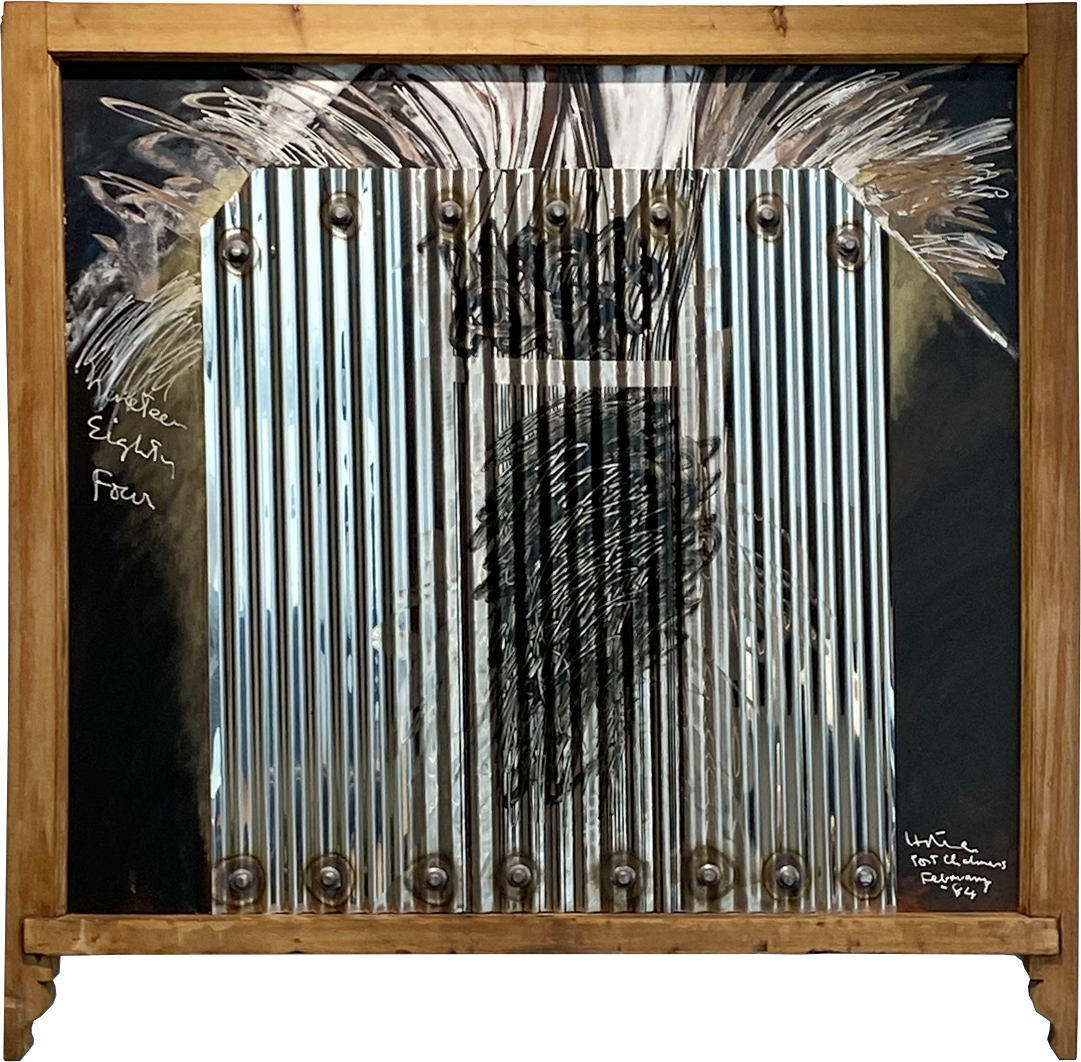HOTERE, Ralph;
Nineteen Eighty Four
1984
Corrugated stainless steel on board
815 x 900mm

Lucinda Bennett
Ralph Hotere (Te Aupōuri) is one of Aotearoa New Zealand’s most respected artists, best known for his abstract art and frequent use of the colour black, as well as crosses, circles, and lines. As a young man, Hotere studied in France and travelled around Europe where he saw exciting new styles of modern art. While in Italy, he visited the grave of his brother Jack, who was killed in action in World War II. This moment deeply influenced Hotere’s art for years to come.
After returning to Aotearoa, Hotere began introducing words into his paintings, working with well-known poets such as Hone Tuwhare and Bill Manhire. He also began using unusual materials in his art, such as corrugated metal and old window frames, which you can see in Nineteen Eighty Four.
Even though Hotere didn’t often talk about his art (he liked to let it to speak for itself), during the 1980s he began using his work to share strong political messages, such as his opposition to the 1981 Springbok rugby tour and the sinking of the Rainbow Warrior in 1985.
However, the political work he is perhaps best known for his Aramoana series, a group of artworks made in protest against plans to build a second aluminium smelter at Aramoana, close to his home in Koputai Port Chalmers. The project would have harmed important salt marshes, where birds and native plants lived, and had wider environmental impacts.
Hotere didn’t just make art about the issue—he joined the resistance too, supporting local iwi and passionate residents who were fighting to protect the area. The Save Aramoana Campaign inspired his work for over ten years. Some of this art was “unofficial”—like the time he threw black paint across a giant pro-smelter billboard and sent a photo of it to a friend, calling it “probably the best painting I’ve done in 30 years. It took me 2 seconds.”
Peter Shaw
Nineteen Eighty Four is from Ralph Hotere’s Aramoana series, which came about as a result of his opposition to the proposal to build a second aluminium smelter at Aramoana, not far from his home at Koputai Port Chalmers. As in much of his work made during the years 1982 to 1985, he has made use of recycled elements, here a sash window frame, which holds the whole construction together. While it has a formal value, it also connects with the many old villas of the Otago area and is conservationist in its ‘waste not’ aspect.
Hotere’s preference is for strong colour, most often black, which gives his work a serious tone. He always avoids representation but suggests a great deal by the use of splattered paint, which can have diverse associations, including rain, lightning, and explosions. This work could perhaps be looked at as the view through a window—in which case its message is hardly one of unrelieved gloom. Like all good abstract painters, Hotere wishes the viewer to pay as much attention to the formal (design) aspects of the painting as to any message conveyed.
Provenance
1985–
Challenge Collection (later Fletcher Trust Collection), purchased from RKS, Tāmaki Makaurau, January 1985 (offered 7 November 1984?)

